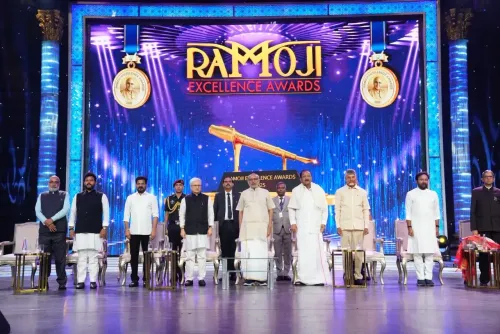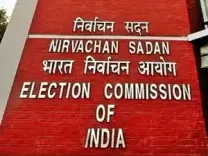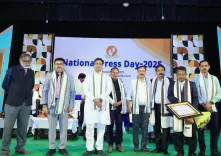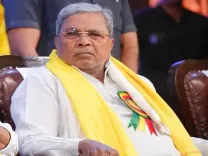Did Lord Ram Call Upon Goddess Durga During Autumn?
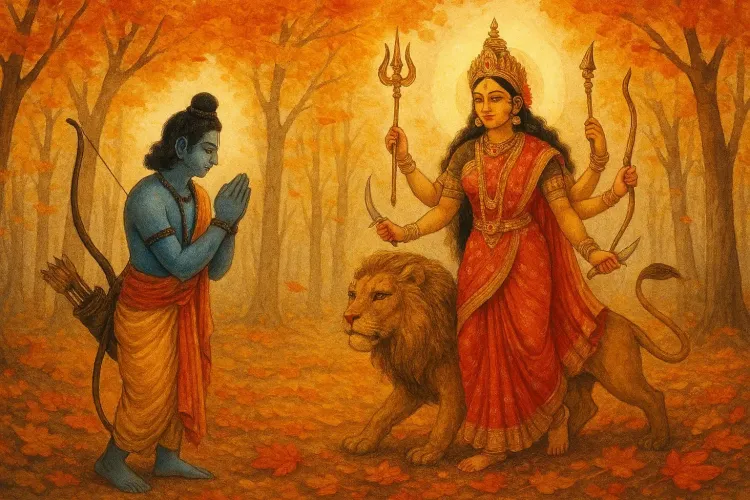
Synopsis
Key Takeaways
- Vijayadashami marks the victory of good over evil.
- Durga Puja is celebrated nationwide and has deep cultural roots.
- The festival is linked to Lord Ram's invocation of Goddess Durga.
- Modern celebrations blend tradition with community spirit.
- UNESCO recognizes Durga Puja as an intangible cultural heritage.
New Delhi, Oct 1 (NationPress) Vijayadashami, celebrated on Thursday, represents the triumph of good over evil, justice over injustice, truth over falsehood, and light over darkness.
The festival is observed nationwide, marking the demise of Ravana at the hands of Lord Ram, coinciding with the conclusion of Durga Puja, which culminates on this very day.
According to one interpretation of the Ramayana, a connection between these two significant events is highlighted. As noted by priest and Vedic astrologer Gopal Bhattacharya, while texts indicate that Durga Puja was initially performed by Raja Surath during Spring, the bond between Lord Ram and this festival is profound.
Legends suggest that Raja Surath worshipped the Goddess as Mahishasuramardini Durga in Bolpur, near Santiniketan, located in Birbhum district of West Bengal.
Mahishasuramardini symbolizes the goddess defeating the demon who transformed into a buffalo. However, contrary to popular belief, the major festival among Bengalis, known as Sharadiya Durgotsav (observed in Autumn), is indeed associated with Lord Sri Ramachandra, as mentioned in Krittivasa Ramayana.
This narrative is part of the epic recounted by Krittivas Ojha, commonly referred to as Krittivasa Ramayana, and shared by Jawhar Sircar, a cultural researcher and author.
Today, Durga Puja is popularly termed Sharodotsav, or the Autumn festival, also known as Akal Bodhan, referring to the premature invocation of the goddess.
This Autumn festival was inscribed in 2021 on UNESCO’s Representative List of the Intangible Cultural Heritage of Humanity.
As per UNESCO, Durga Puja is an annual event held in September or October, predominantly in Kolkata, West Bengal, as well as in other regions of India and among the Bengali diaspora, celebrating the ten-day worship of the Hindu mother-goddess Durga.
According to priest Gopal, Autumn is perceived as a period of rest for the gods, coinciding with Lord Ram's battle against Ravan, during which he sought the goddess's blessings to achieve victory and rescue his wife, Sita.
Continuing this tradition, the goddess is awakened with the ritual involving wood apple leaves (bilvapatra) to commence the Sharadiya Durga Puja.
Over centuries, particularly between the 15th and 16th centuries, the representation of the goddess evolved among her devotees, coinciding with the rise of Vaishnavism in Bengal, which is thought to have rendered her character more domestic.
Thus, the goddess is now perceived as a beloved daughter welcomed home, accompanied by her sons Kartik and Ganesh, and daughters Saraswati and Lakshmi—a characterization echoed in Sircar’s references.
Consequently, the festivities characterized by fanfare, lights, music, dance, new garments, and delicious foods highlight the celebration.
On Vijayadashami, it is believed she returns to her husband, Lord Shiv, on Mount Kailash. The rituals on her departure resemble those of a household bidding farewell to a daughter going to her in-laws.
Over the years, Durga Puja has transformed into a community celebration, emphasizing its religious significance, with notable influences from the Krittivasa Ramayana, according to experts.

